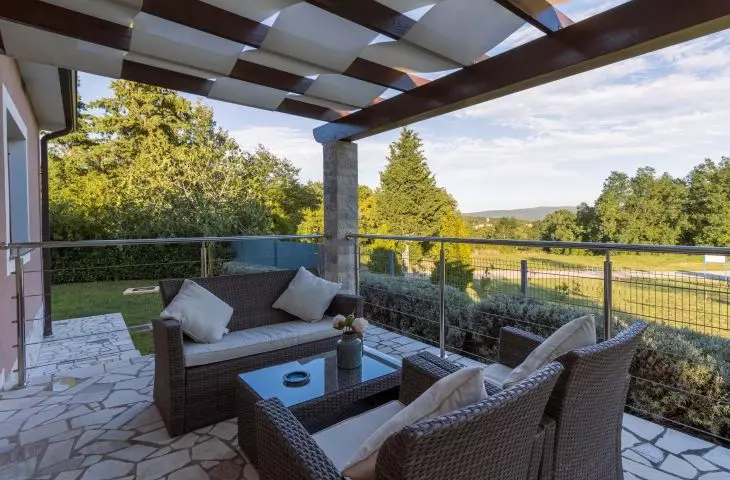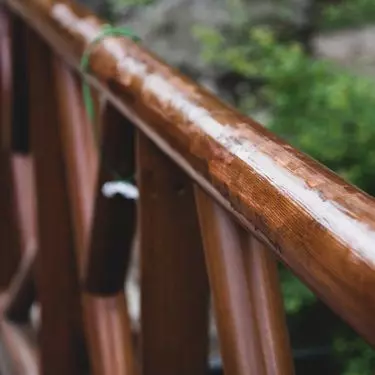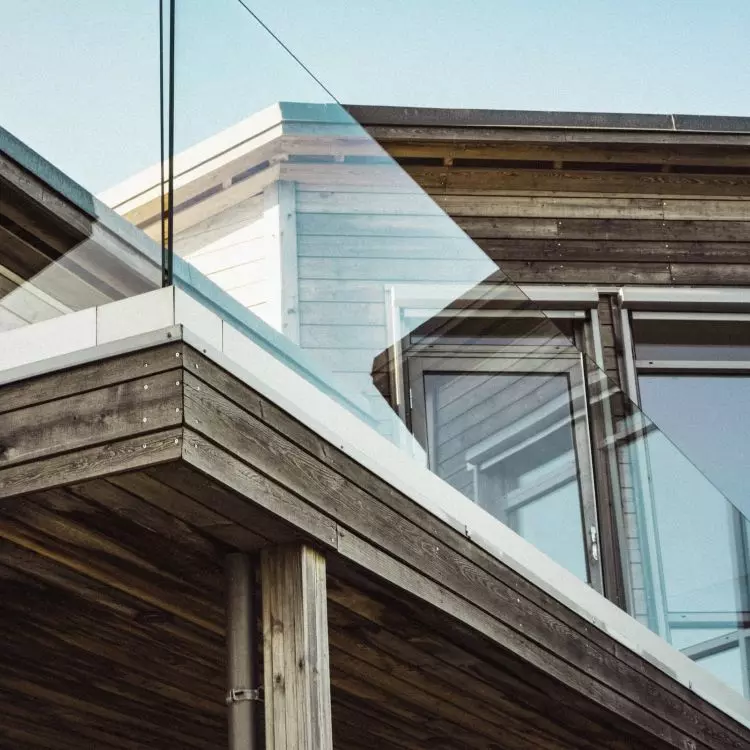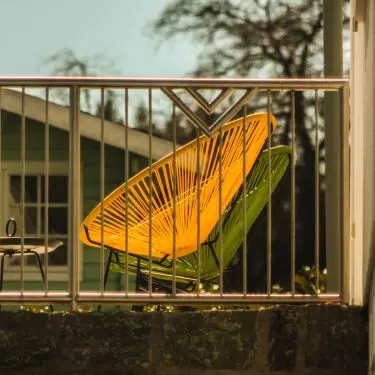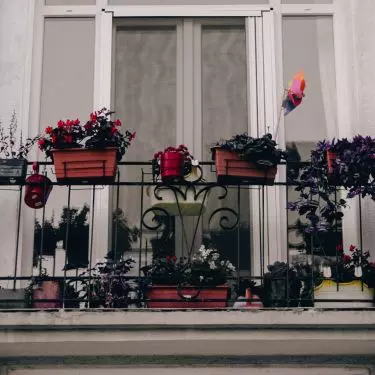Outdoor railing is a must for every balcony, terrace and high stairs due to safety reasons. However, in terms of its appearance and style we have a lot of freedom. Well-designed balustrades emphasize the character of the building and harmonize with the style of the entire environment. To please the eye and protect the occupants of the house for years to come, they should be made of durable and resistant materials. In modern construction, stainless steel and light and elegant glass are widely used. Nevertheless, wooden and wrought iron balustrades still find many enthusiasts. Which material will you choose for your project?
Balcony balustrade and construction law
For safety reasons, the installation of balcony balustrades is covered by the provisions of the Decree of the Minister of Infrastructure of 12.04.2002. According to this document, the height of the balustrade in a detached house should not be less than 0.9 m. Its construction must be free of sharp-edged elements and should guarantee effective protection against people falling from a considerable height. The glass balustrade must be made of reinforced tempered glass.
The regulations on balustrades should also be of interest to owners of single-story houses and those in which no balcony is provided. If the design of the building includes a driveway or stairs with a height of more than 0.5 meters, a railing must be included at them. The installation of a balustrade is also required for portfenets, which are high windows that open across the width.
According to the regulations, the balcony balustrade in a single-family house should be at least 0.9 m high
Photo: Paul Rottmann © Unsplash
What materials are used for exterior balustrades?
Outdoor balustrades are constantly exposed to harmful weather conditions. In the Polish climate, the damaging effects of moisture, frost, strong wind, as well as the sun and high temperatures must be taken into account. The material of which the balcony railing will be made should retain its original appearance and properties for decades. For this reason, balustrades for outdoor use are made only from durable and long-lasting materials: steel and stainless steel, aluminum, tempered glass, cast iron and selected types of wood.
The ideal balustrade combines excellent technical performance along with a design that matches the style of a particular building. The choice of balustrade is also influenced by price, the need for maintenance and the method of installation. Let's take a look at the most popular solutions!
Stainless steel balustrades
Steel balustrades are the first choice of many investors of both residential and public buildings. Hardly surprising — the numerous advantages of stainless steel make it the ideal material for railings and handrails. Why?
- Steel elements are extremely weatherproof, resistant to damage and corrosion.
- Steel is lightweight, so it does not overburden building structures.
- It can be easily formed into any shape.
- The high-gloss silver finish suits minimalist buildings and combines well with tempered glass.
- Stainless balustrades do not require any maintenance.
Balcony and terrace railings made of ordinary steel (painted or galvanized) may look very similar, but they will not have identical properties. Ordinary steel is less resistant to weather conditions, especially moisture, and will corrode without regular maintenance.
Glass balustrades
Balconies framed by glass balustrades add lightness to buildings and harmonize well with the simple aesthetics of modern facades. Glazing is also beneficial for interiors, as it does not stop light from entering rooms. For these reasons, tempered glass panels are a common sight on balconies in apartment blocks and single-family housing. They are also used as external protection for portfères, or French balconies, which let an unusually large amount of light into the interiors.
Glazed balustrades can be made entirely of homogeneous panels of tempered glass or be an infill between metal posts. In either case, extremely durable tempered glass is used for balcony structures. Thanks to the use of PVB film, it does not break into pieces even if broken. The choice of this material allows to make decorative balustrades with a variety of prints on milky or transparent glass sheets. They also have the advantage of easy maintenance with household detergents for cleaning mirrors and windows.
A balcony is the perfect place to plan an outdoor seating area. Take a look at the articles where we share the most interesting arrangements!
Glass balustrades are made of tempered glass protected by PVB film. They are extremely resistant to damage and easy to maintain
Photo: Ehud Neuhaus © Unsplash
Forged balcony balustrades
This type of balustrades is made of cast iron bar, usually in deep black. Wrought iron balcony railings are highly decorative and perfectly enhance the traditional style of rustic properties and classic mansions. In many cases, these railings are custom-made, often matching in appearance the richly decorated gates and fences of the property. Their undoubted advantage is the intricate, openwork construction and the unique look of each design.
Cast iron alloy, from which decorative balustrades are made, also has very practical properties. Cast iron is resistant to all unfavorable conditions of the Polish climate and mechanical damage. The surface of wrought iron balustrades for many years maintains an unchanged appearance, does not rust and does not require maintenance.
However, it is worth knowing that the decision on cast-iron railings must be made already at the initial stages of building design. Their weight is several times greater than steel structures, so walls and balconies decorated with wrought iron ornaments must be properly reinforced. The high price of cast-iron balustrades, on the other hand, can be a burden on the wallet.
Cast iron bar is extremely resistant to the conditions of the Polish climate and mechanical damage. Wrought iron balustrades are heavy and expensive, but they attract the eye with their intricate workmanship
Photo: Betul Balci © Pexles
Wooden balustrades for balcony and terrace
A wood balustrade is a rare sight in multi-family housing, but smaller traditional-style buildings are often finished with natural materials. Wood, as a material for railings, has its advantages, but also its requirements. In its favor is the pleasant-to-the-touch texture, stylish appearance and resistance to heating under the influence of sunlight. For this reason, wooden railings are worth installing on the south side of the building and in heavily sunlit areas.
To ensure that the exterior wood structure remains intact for many years, it should be given some attention. First of all, it should be made of the most resistant species of wood, such as oak, larch, spruce, pine or exotic trees. The wood used to make the balustrade undergoes a multi-stage treatment, which includes drying, planing, sanding, impregnation and varnishing. The last two stages must be repeated regularly to keep the balustrade from rotting and decaying.
A wooden balustrade will retain its beautiful appearance for years, provided it is impregnated regularly. Wood can be a stylish finishing touch to traditional buildings
Photo: Bozhin Karaivanov © Unsplash
How much does a balcony railing cost?
The cost of balcony railings depends largely on the material chosen. Prices for different types of railings are quoted per running meter. Thus, the budget should take into account the dimensions and number of balconies, terraces or portfères in the entire building. It is worth remembering that simple balustrade designs will be cheaper than complex ones, especially those custom-made. The price will also be affected by the way the railings are installed, especially in the case of heavy iron rod elements.
Below you will find approximate prices for the most common balustrades:
-
stainless steel balustrades cost 250-300 PLN/meter for the simplest products, more expensive balustrades with unusual shapes and ornamentation can cost more than 500 PLN/meter,
-
ordinary steel is an expense from 150 PLN/meter,
-
wrought iron balustrades prices start at 600 PLN/mb and increase significantly for intricate designs,
-
the price of a wooden balustrade depends on the type of wood — native species cost from 300 PLN/meter, while exotic wood is much more expensive,
-
the cost of glass balustrades is most often quoted including the steel frame and starts at 600 PLN/mb.
In summary: the prices of exterior railings are comparable. Their cost increases significantly only in the case of numerous balconies with a large area. However, it is worth choosing products that allow you to create a harmonious and functional balcony space for all household members. Thanks to the properties of modern materials, there is no need to compromise: balcony railings can be stylish and safe at the same time.
Are you building a house? We have more tips about stairs and balustrades for you



